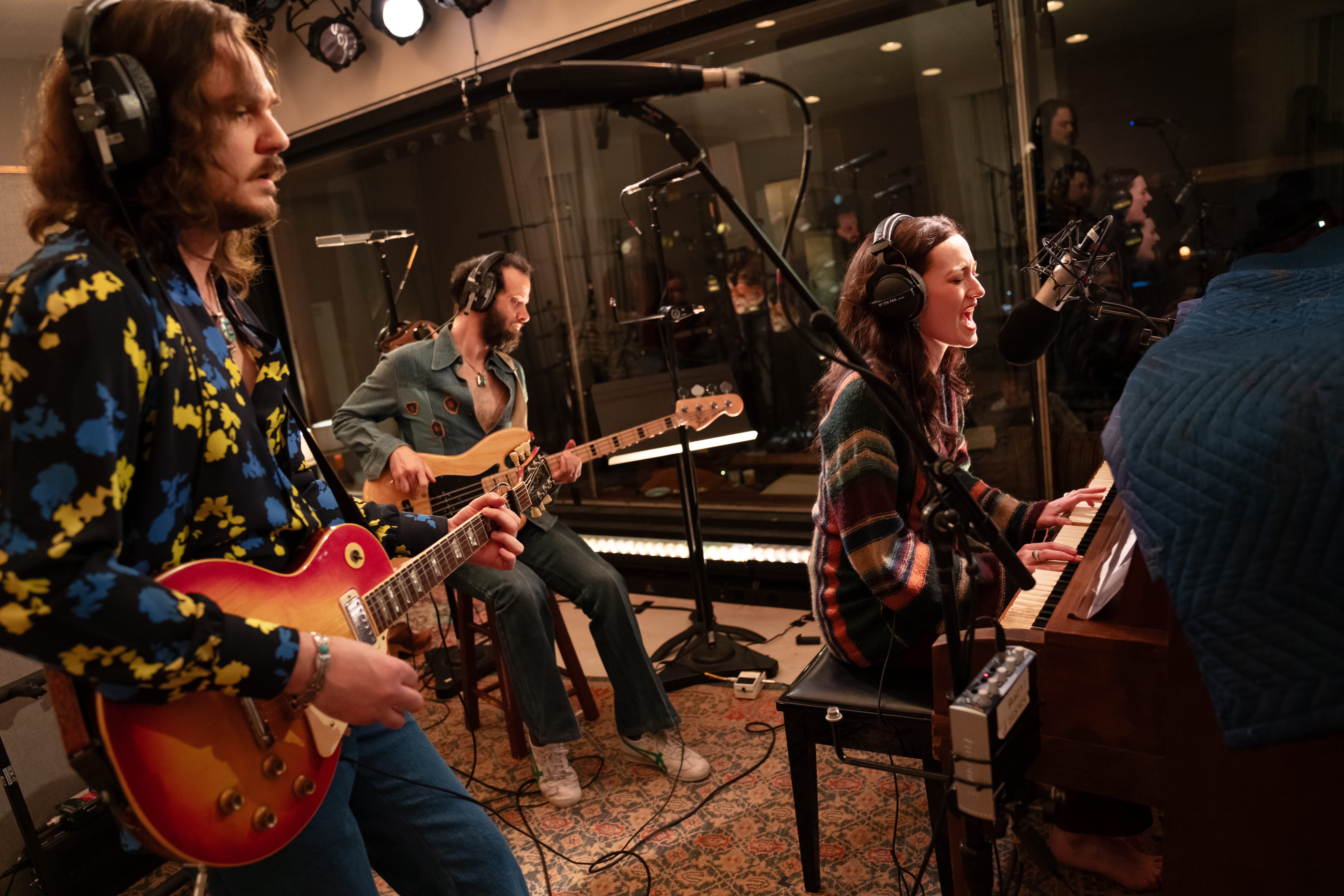Orpheus X

(© T Charles Erickson)
The lines between this world and the next, reality and fantasy, and music theater and art installation are all often hypnotically blurred in Rinde Eckert’s intoxicating Orpheus X, now being presented by Theatre for a New Audience at the Duke on 42nd Street.
Eckert’s revision to the Greek myth unfolds in a modern-day metropolis, where internationally renowned rock star Orpheus (Eckert) has put an end to his career after witnessing a stranger, Eurydice (Suzan Hanson), being fatally struck by a taxi. In the living world, Orpheus’ manager (John Kelly) attempts to pull his client back to work and a sense of normalcy. Meanwhile, in the afterworld, Persephone (also played by Kelly, who wisely never attempts to impersonate a woman), Queen of the Dead, works to help Eurydice accept her death. In between these scenes are ones in which Orpheus imagines what life with this woman he’s never known and with whom he has become obsessed might have been like.
Eckert’s humor-filled script is both pointedly jarring, specifically in its conception of this world, and sublimely lyrical, particularly in the ways in which the experience of death is imagined. His songs are an eclectic lot — ranging from intense, dissonant anthems to soaring arias. The score grabs theatergoers’ ears (if not always their hearts) whether the writer-performer is belting out one of the tunes with haunted, and slightly disconnected, power, or Hanson’s ravishing soprano voice is blending with Kelly’s clarion falsetto.
Director Robert Woodruff’s taut and immaculately conceived production unfolds with almost dreamlike fluidity on a large raised platform that’s flanked on one side by a Plexiglass wall and on another by a video screen that hangs just above the action (scenic design is by David Zinn and Denise Marika). Early in the production, when Eurydice seems to be first entering Hades, she scrawls Greek letters on the glass wall and it’s a marvelous visual metaphor for the ephemeral disconnect between the worlds of the living and the dead.
Throughout the piece, the screen is used for Marika’s often surreal and jagged videos which show a woman undressing and wandering through a labyrinth. While these elements help bring the next world to life beautifully, two huge girders — one rising perpendicularly from the stage and one that horizontally extends just above the playing area — are reminders of the realities of the world of the living.
The text, music, and production combine to terrific effect cumulatively, and by the time Orpheus has reached the underworld to bring Eurydice back to earth, theatergoers may find themselves hoping that Eckert has given the story an alternative ending. While this proves not to be the case, he does give the myth an ingenious twist that reflects poignantly on the tale and its contemporary relevance.










